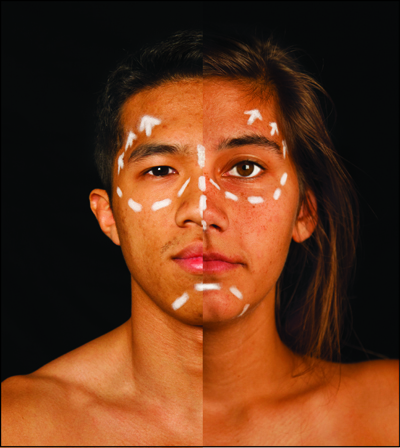
Summer is the perfect time to head outside, soak in the sun, and increase the chances of damaging your skin.
The effects of not properly caring for skin during the summer may include wrinkles, early aging, spots, melanoma and skin cancer, according to James Grichnik, a dermatologist and professor at the Miller School of Medicine.
The main culprits in sunlight are ultraviolet A (UVA) and ultraviolet B (UVB) rays. UV radiation damages the skin’s cellular DNA, and in excessive amounts can produce the genetic mutations. These mutations can lead to skin cancer.
UVA penetrates the skin more deeply than UVB, which is the main cause of skin reddening and sunburn. A tan is the result of an injury to the skin’s DNA. The skin darkens in an attempt to prevent further DNA damage. These imperfections, or mutations, can also lead to skin cancer.
Another more prominent sign of skin cancer is a mole, which is how junior Gina Gittler discovered that she had skin cancer.
Gittler’s family had a history of skin problems. Both parents had melanoma. Still, Gittler spent her summers in her hometown, Los Angeles, surfing, swimming, and occasionally forgetting to wear sunscreen.
This year, however, she noticed a mole on her lower calf and monitored it. The mole grew, but eventually stopped growing. It didn’t have irregular borders, so Gittler didn’t go to the dermatologist until just two months ago.
Her results showed that the mole was precancerous. Fortunately, it was in the early stages and could be surgically removed. But even though the mole was smaller than a pea, her whole calf will be perpetually scarred.
“People don’t understand skin cancer spreads just like other forms of cancer,” Gittler said. “The good thing is it comes up on the skin. It’s not inside like other cancers where you can’t see the symptoms. Because of that it’s pretty preventable.”
Prevention is easy, according to professor Grichnik. Go outside early or late in the day. UVB rays peak in the middle of the day and 75 percent of those rays hit the Earth during a four-hour period around noon. Another precaution to take is to wear more clothing, which may help prevent further exposure to sun damage.
“People in the desert don’t run around in bikinis. They cover up to reflect the light away, it’s even cooling,” he said. “People in the desert have learned that and we’re still figuring that out.”
The most common precautionary measure is to use sunscreen. Those with SPF of 15, 30 or better are recommended. However, be sure to apply it well and reapply when it gets washed off. Sun blocks with zinc or titanium are the best, but aren’t as cosmetically appealing.
The results of improper skin care vary, but the most common one is sunburn. Shasa Hu, another dermatologist and assistant professor at the Miller School of Medicine, said that a burn may pose a higher risk of developing skin cancer.
Though some may try to remedy the situation by putting on sunscreen after a sunburn, sunscreen doesn’t heal burns. Instead, a proper remedy entails staying indoors until the burn heals, staying hydrated, and taking ibuprofen.
“I don’t normally put on sunscreen. If I get burned the previous day, I’ll put something on that, but I don’t burn that easily,” said sophomore Emmett Torney, a marine affairs and policy major. “My grandfather died of skin cancer, and I guess it should have an effect on me, but I still don’t wear it.”
It is important to frequently check for other signs of sun damage, like moles. Hu recommends searching for funny-looking, or “ugly duckling” moles.
“This is one of those things that prevention really pays off,” Hu said. “Some cancers you can’t prevent, like breast or prostate, but we know by having a strict sun protection routine it can reduce wrinkles and other skin problems.”
Gittler does regret not going to see her doctor sooner, but is glad she was able to catch it and avoid skin cancer. The important thing, she said, is to regularly search for unusual growths on the skin.
“It’s better to be safe than sorry,” Gittler said. “And yes, it may cost some money to get it checked, but you’d rather it get checked and it turns out to be nothing than not, and find out you have cancer. There’s no loss in doing it. Go right away, don’t wait.”






